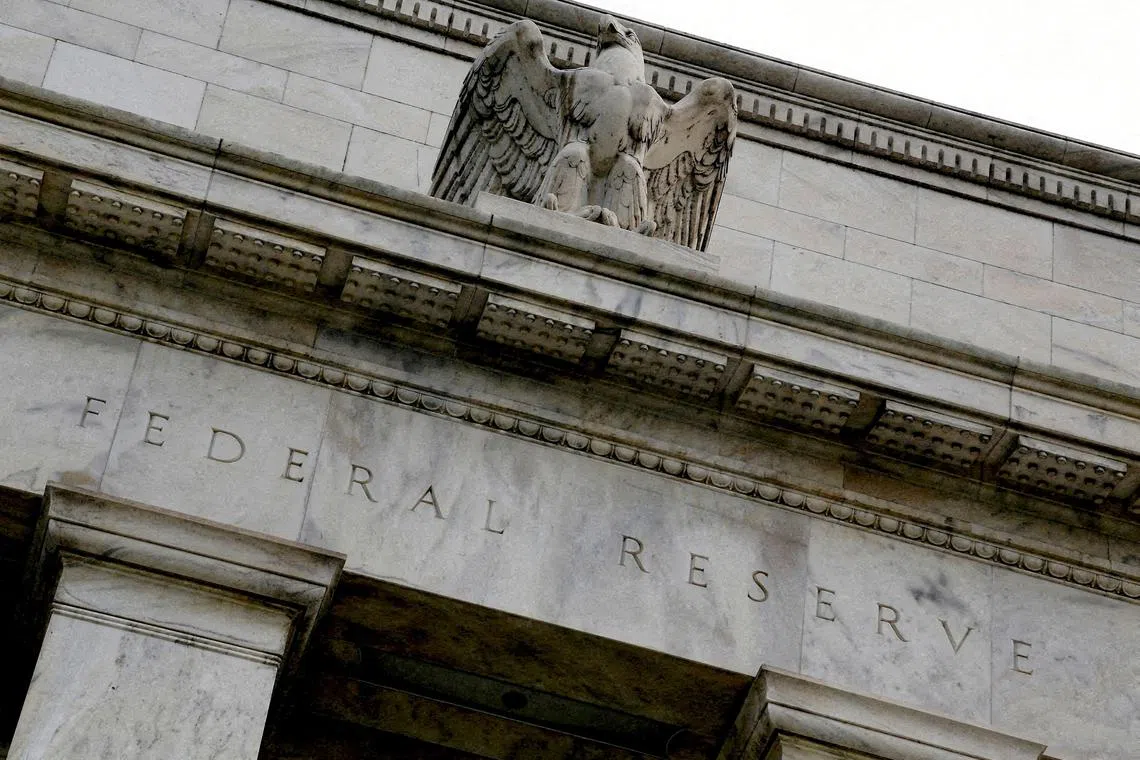US Fed minutes show divide on rate cut pace, tariff impacts
Sign up now: Get ST's newsletters delivered to your inbox

Federal Reserve officials voted in mid-June to hold the benchmark lending rate steady for a fourth straight policy meeting.
PHOTO: REUTERS
Follow topic:
- Federal Reserve officials disagree on cutting interest rates in 2024 due to uncertainty over tariff impacts on inflation, despite holding rates steady in June.
- Policymakers acknowledge that tariffs could raise prices, but they are unsure about the timing and duration of these effects on inflation.
- The Fed is monitoring the labour market closely; a weaker job market could prompt earlier rate cuts, though they are positioned to wait for clarity.
AI generated
WASHINGTON – US central bank officials have divergent views on cutting interest rates in 2025, with continued uncertainty about the impact of tariffs on inflation, according to minutes of their most recent policy meeting.
Federal Reserve officials voted in mid-June to hold the benchmark lending rate steady for a fourth straight policy meeting, while Fed chair Jerome Powell said the bank did not need to rush to adjust rates.
Mr Powell’s patient approach to lowering interest rates has drawn ire from US President Donald Trump, who on July 9 again blasted the level as “at least” three points too high.
While policymakers expected Mr Trump’s tariffs to nudge prices upwards, the June meeting minutes said there remained “considerable uncertainty” on the timing, size and duration of the effects.
Companies might choose not to raise consumer prices until they depleted their product stockpiles, for example, but supply chain disruptions caused by the levies could trigger larger price hikes.
“While a few participants noted that tariffs would lead to a one-time increase in prices and would not affect longer-term inflation expectations, most participants noted the risk that tariffs could have more persistent effects on inflation,” the report said.
Officials voted unanimously at their last meeting to keep rates unchanged at a range between 4.25 per cent and 4.5 per cent.
But even as they pencilled in two rate cuts in 2025, seven of 19 policymakers projected no reductions at all in 2025.
For now, the independent central bank – especially Mr Powell – has come under increased political pressure from Mr Trump to cut rates sooner.
“LOWER THE RATE!!!” Mr Trump wrote on his Truth Social platform on July 9, citing benign inflation readings in recent months.
Besides keeping inflation in check, Fed officials are also monitoring the labour market for signs of weakness as they mull rate cuts.
One issue that could tip the balance in favour of an earlier rate reduction is a softening jobs market.
“Most participants suggested that higher tariffs or heightened policy uncertainty would weigh on labour demand, and many participants expected a gradual softening of conditions,” the report said on July 9.
For now, policymakers found that they are “well positioned to wait for more clarity on the outlook for inflation and economic activity”.
“Participants clearly were starting to think more about what comes next, although were split on the best response,” said Pantheon Macroeconomics senior US economist Oliver Allen.
He added that a weaker labour market would “tip the balance by September” for a rate cut. AFP

